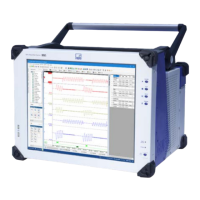GEN7iB
170
INTERFACE/CONTROLLER
INTERFACE/CONTROLLER
11
Cable selection and lengths:
Cables require different properties when they exceed certain lengths based on
thepropertiesoflightinanopticalber.
Single Mode Cable is a type of cable that has a relatively small light carrying
coreandthereforemakesfewerinternalreectionssothatthe
path of light is closer to a straight line and thus can travel further
distances. This cable is suitable for 1310 nm SFP modules.
Multi Mode Cable is a type of cable that has a relatively thicker light carry-
ingcore.Lightinathickercoremakesmorereectionsandis
therefore only suited to shorter distances. This cable is suitable
for 850 nm SFP modules.
Foropticalcablelengthcalculationseechapter„Calculatingmaximumbercable
length“ on page 492.
For Installation and removal of the SFP+ module see section „Installing a 1 Gbit
SFP/10 Gbit SFP+ Module“ on page 173.
10 Gbit Ethernet card in GENDAQ series networks
There are several different ways to connect individual components together when
using the 10 Gbit Ethernet card therefore this card allows the user more freedom to set
uptheirsystemwithdifferentcongurations.
The 10 Gbit Ethernet card can essentially be used to communicate at higher through-
put speed of the standard 1 Gbit Ethernet or with more advanced setups can act as
a manually switchable storage selector or even a dual communication and storage
interface.
The following Fig. 11.20 shows a simple setup using the 10 Gbit Ethernet card. A PC
with an optical Ethernet interface which has SFP+ support is connected via optical
cable to the interface of the 10 Gbit Ethernet card option of the GENDAQ unit. This
setup utilizes the higher speed communication of the 10 Gbit Ethernet card for com-
munication with Perception.

